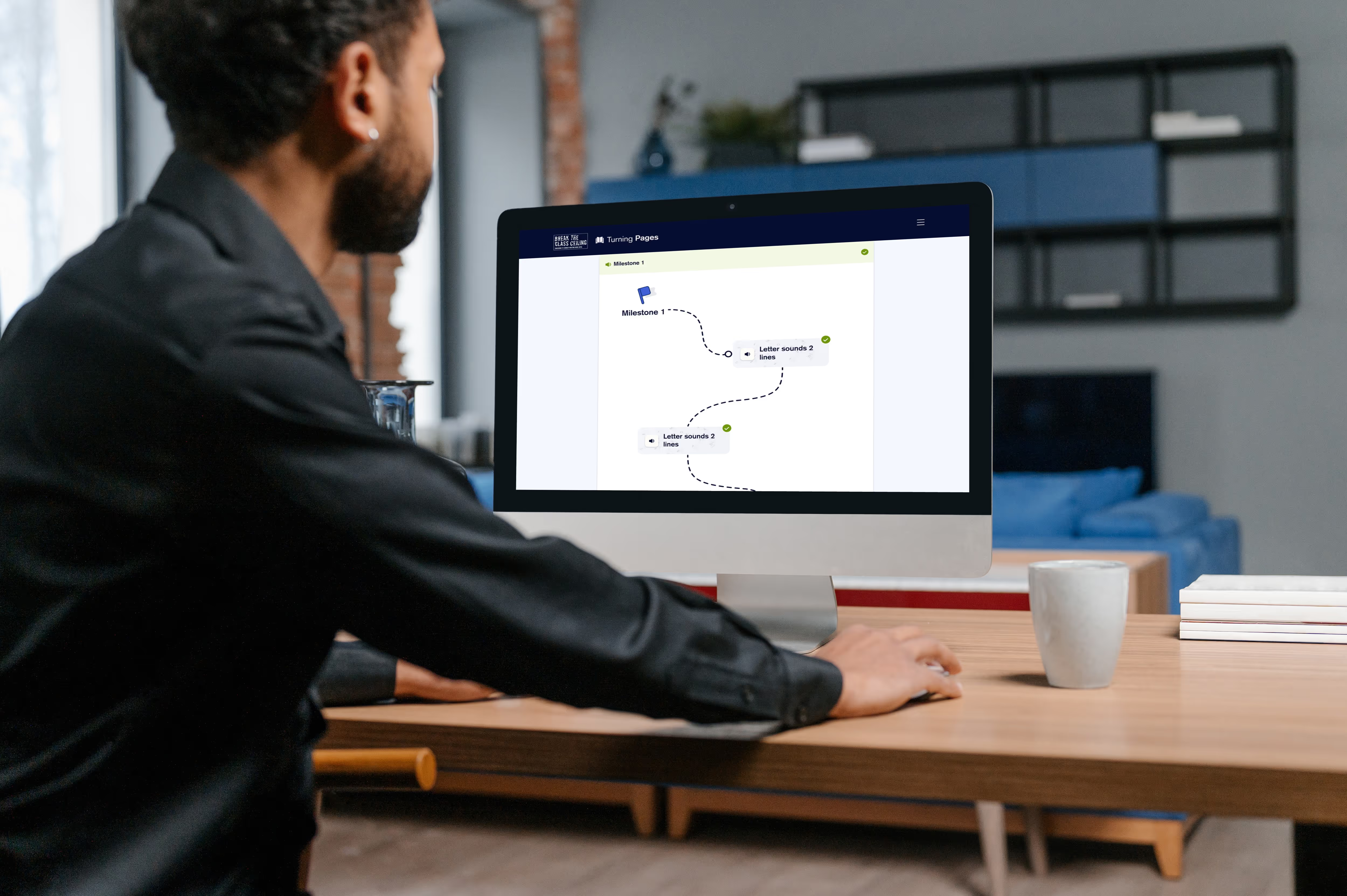Shannon Trust: Turning Pages
Empowering Literacy in Prisons
.avif)

Where it all started
In the heart of the UK's prison reform efforts, a powerful collaboration emerged. Shannon Trust, a charity dedicated to transforming lives through literacy, joined forces with the Ministry of Justice and our team to tackle an important challenge: reducing reoffending rates by addressing low literacy levels among prison leavers.
This all started by the Prison Leavers Innovation Challenge, an initiative focused on supporting prisoners' reintegration into society. In collaboration with Shannon Trust, we aimed to digitise their "Turning Pages" program, which consists of five structured manuals using a synthetic phonics approach to teach reading and writing skills.
Our journey with Shannon Trust didn't stop at the prison gates. As the project evolved, we expanded our focus to make the tool more inclusive, reaching out to other communities struggling with literacy. This expansion came with a new challenge: ensuring the tool could be scaled, allowing various organisations to manage their own learners.

Where we came in
We have collaborated with Shannon Trust in two pivotal phases:
Phase One: We built a user-friendly digital version of 'Turning Pages'. This tool allowed learners to develop reading and writing skills while connecting with supportive coaches. Our primary focus was on accessibility, ensuring the tool catered to various literacy needs and was inclusive for those with neurodivergent conditions.
Phase Two: We developed a community management tool. This expansion allowed Shannon Trust to collaborate with similar organisations, enabling them to manage their own learners and create tailored versions of the tool for different contexts.
What we delivered
User Research
Our research approach was both intensive and empathetic. Given the users of the tool, we dedicated significant time to understanding their unique challenges. This included:
- Conducting in-depth studies of learners' needs, including those with neurodivergent conditions, and others with varying learning styles and abilities.
- Understanding the requirements of coaches, facilitators, and organisations who will be managing their learners through the tool.
- Learning more about prison leavers and the challenges they face in reintegration.
Design and User Testing
Following the user research, we used the insights to create a series of visual designs and interactive prototypes. Each design underwent rigorous user testing to ensure it met the needs and expectations of the target audience. This iterative process allowed us to refine the designs based on user feedback, ensuring that the final product was both intuitive and effective in addressing the specific challenges identified during the research phase.
Key features we focused on included:
- Creating an interactive, encouraging learning experience with clear milestones, allowing learners to track their progress and celebrate achievements.
- Developing support systems for learners to get help when needed, including built-in resources and easy access to assistance from their coaches.
- Streamlining the process for organizations and facilitators to set up and manage learners.
- Enabling coaches to effectively support learners and track their progress through real-time analytics and communication tools to foster engagement.
- Ensuring compatibility across devices to make the tool accessible to learners and facilitators, whether on desktop, tablet, or mobile, supporting learning anytime, anywhere.
Technical Design & Development
Our technical approach was collaborative and aimed at addressing key challenges while ensuring the creation of a robust and secure solution. The primary challenge was to develop a system that prioritised the security of user data, utilising the appropriate encryption methods to safeguard sensitive information and maintain user privacy.
Additionally, we needed to integrate the new system seamlessly with the existing CRM that Shannon Trust is currently using. We focused on ensuring a smooth integration with Salesforce, the CRM platform in use, making sure that all relevant data could be synchronised and managed effectively across both platforms. This not only streamlined operations but also enhanced the overall user experience for administrators and facilitators managing learner data.
Impact
While it is still somewhat early to fully assess the overall impact of the new digital tool, initial results from its implementation in the Kent, Surrey, and Sussex probation regions are promising. The tool has demonstrated significant potential in enhancing engagement with probation services, making the process more effective and accessible.
Participants using the tool are already showing marked improvements in communication and literacy skills, a critical area of focus. The feedback from both probation officers and learners has been overwhelmingly positive, reflecting the tool's ability to meet the needs of its users. Additionally, participants have reported feeling more confident in their employability, indicating that the tool is not only addressing immediate educational needs but also helping to build skills that are essential for long-term reintegration into society.
The community management tool has been a milestone game-changer for scaling the programme for the non-prison leavers. As of last year, seven organisations were using customised versions of the tool to manage their learners and coaches, with this number continually growing. These early successes are encouraging and suggest that the digital tool is on the right path to making a meaningful difference in the lives of its users and the broader community.

Get in touch
If you’re interested in us building something similar for you too, then get in touch!





